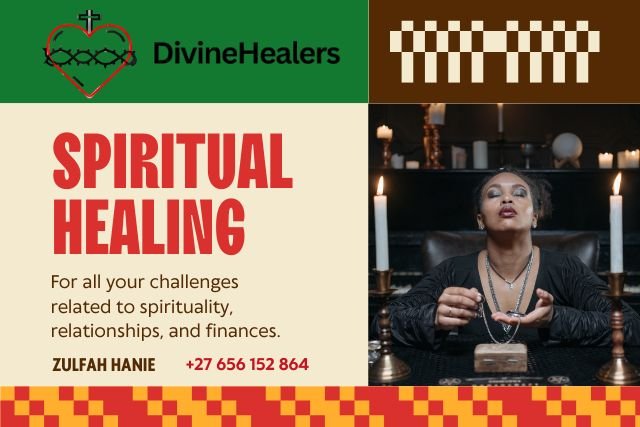How to Get Back Your Lost Love: A Practical 7‑Step Guide
Breakups rarely feel simple. If you’re searching for how to get back your lost love, you’re probably balancing hope with uncertainty. The good news: while there’s no guaranteed formula, there are proven principles that help you reconnect respectfully, rebuild trust, and decide whether reconciliation is truly right for both of you.
This guide blends psychology-backed strategies with real-world scripts and timing tips. It’s designed to help you get back lost love without pressure or manipulation—just honest growth, clear communication, and consistent actions.
Before You Begin: Ground Rules for Relationship Recovery
- Consent and respect first. The goal isn’t to control outcomes; it’s to create conditions where both people want to try again.
- Own your part. Preparing to apologize and change is non‑negotiable.
- Focus on healthy strategies. Quick fixes (including trending “love spells”) can be tempting, but meaningful change comes from consistent, respectful behavior.
- Be open to either outcome. Ironically, you’re most attractive when you’re okay with a yes or a no.
Why Did Things End? Clarity Before Connection
Reconciliation starts with understanding. Ask yourself:
- What pattern or behavior contributed most (distance, criticism, broken trust, mismatched priorities)?
- What did your ex ask for that they didn’t receive?
- What did you need that you didn’t communicate clearly?
Your answers will guide how to reignite a lost relationship with purpose—not guesswork.
The 7‑Step Plan to Reignite the Connection
These are practical steps to win back your ex in a healthy way. Use all seven, adapting the pace to your situation.
Step 1: Stabilize Your Emotions
Give yourself 2–4 weeks of space for self‑care (sleep, movement, journaling, social time). This isn’t the silent treatment; it’s emotional first aid. When you reach out, you want to sound grounded, not frantic.
Journaling prompts: What did I learn from the relationship? What do I regret? What would I do differently in the first 30 days if we tried again?
Step 2: Diagnose the Core Issue
Break down the breakup into solvable problems. Examples:
- Communication drift: Set weekly check‑ins and agree on repair phrases.
- Mismatch of priorities: Align schedules and non‑negotiables in writing.
- Broken trust: Transparency, therapy, and time—not pressure—are required.
Looking for reflective, spiritually oriented support as you clarify your next steps? Some people explore intuitive or spiritual services alongside therapy and self‑work. If you’re curious, you can review options below. Remember, anything you try should support respectful, consent‑based communication—never replace it.

Step 3: Become the Partner You Meant to Be
List three behaviors that would have changed the trajectory of your relationship. Example sets:
- Listening without interrupting; scheduling quality time; following through on small promises.
- Managing jealousy; reducing work spillover; showing appreciation daily.
Pick two you can execute immediately and one that needs a system (calendar reminders, therapy, or accountability). Take photos or notes of your progress—not to “prove” worth, but to build real habits.
Step 4: Reopen a Low‑Pressure Channel
When you reach out, keep it brief, respectful, and non‑intrusive. Two examples:
“Hey [Name], I’ve been reflecting and taking responsibility for my part. No pressure to reply. If you’re open to a short call next week, I’d appreciate a chance to apologize and hear you out.”
“Hi [Name], a quick note: I understand why you needed space. I’ve been working on [specific behavior], and I’m not asking for anything right now—just wanted to acknowledge my part. Wishing you a good week.”
If they don’t reply, wait 2–3 weeks before a gentle second attempt. If they set a boundary, honor it fully.
Step 5: Rebuild with Small, Positive Interactions
Suggest low‑stakes connection: a 20‑minute coffee, or a walk. Focus on curiosity and empathy, not “getting back together” immediately. Ask, “What would have made things feel safer/closer for you?” Then listen.
Signals you’re on track: consistent, warm replies; light banter returning; mutual suggestions to meet; conversations that feel easy rather than heavy.

Step 6: Have the “State of Us” Conversation
When the vibe is warm again, ask for a focused conversation. Agenda:
- Appreciation and ownership (“Here’s what I learned and changed”).
- Understanding their experience (“What felt hardest for you?”).
- Proposed plan for version 2.0 (clear habits, timelines, boundaries).
Example framing: “I’m not asking for a decision today. I’d love to try for 30 days with weekly check‑ins and specific changes. If it doesn’t feel right, we’ll part respectfully.”
Step 7: Choose with Clarity—Recommit or Release
Healthy reconciliation looks like two people choosing each other again, not one person persuading the other. If they’re hesitant, suggest a short trial period (4–6 weeks). If the answer is no, focus on how to recover from lost love with dignity: therapy, connection with friends, new routines, and goals that rebuild your identity.
What to Say: Scripts You Can Adapt
Use these as a starting point; tailor for your story.
First Outreach (Post‑Space)
Hey [Name] — I’ve taken time to reflect and I see how [specific action] hurt you.
I’m working on [specific change] and have [proof of change, e.g., weekly therapy].
If you’re open, I’d value a short call to apologize properly and hear you.Apology During a Call
You didn’t get the consistency you deserved. That’s on me.
Here’s exactly how I’m preventing a repeat: [two concrete systems].
I’m not asking for a decision now—just a chance to show up better.Re‑date Invite
Would you be open to a low‑key coffee next week—no heavy talk, just catching up?
If not, I fully understand and will respect your space.Common Mistakes that Push Love Further Away
- Over‑texting or love‑bombing. Anxiety reads as pressure.
- Negotiating feelings. You can’t debate someone into attraction.
- Using jealousy. Third‑party theatrics usually backfire.
- Relying on “magic fixes.” While some explore spiritual practices or love spells for personal meaning, consent and communication—not rituals—rebuild relationships.
- Skipping the hard work. If the root cause isn’t addressed, the cycle repeats.
Timing: How Long Does Relationship Recovery Take?
There’s no universal clock, but typical arcs look like this:
- 2–4 weeks: personal reset and first outreach.
- 4–8 weeks: light interactions and a serious conversation.
- 8–12 weeks: trial reconciliation or respectful close.
If you feel urged to “how to bring back your lost lover” overnight, pause. Deep change takes time—and that patience itself signals maturity.
Scenario‑Specific Advice
After a Big Argument
Lead with empathy for their emotional reality before explaining yours. Suggest a reset ritual: “Can we try a 10‑minute listening swap—no interruptions?”
Long‑Distance Relationships
Reignite relationship momentum by scheduling consistent video dates and planning the next visit. Discuss time zones and energy realistically.
Trust Was Broken
Transparency is the price of admission: location sharing by consent, calendar access, or weekly accountability. Expect months—not days—of steady repair.
They’re Unsure
Offer a 30‑day experiment with clear outcomes and mutual exit rules. If it still feels heavy, honor that signal.
Your Personal Plan (15 Minutes)
- Write the three behaviors you’ll change.
- Draft your first outreach text.
- Schedule two self‑care anchors per week.
- Choose one accountability partner or therapist.
- Create a 30‑day reconnection plan with simple weekly commitments.
Final Thoughts
Learning how to get back your lost love is ultimately about becoming the most honest, grounded version of yourself. Sometimes that leads to a second chapter; other times, it leads to healthy closure and a brighter future. Both outcomes are wins when handled with respect.
Whatever path you choose, choose it with clarity, integrity, and care—for them and for you.
